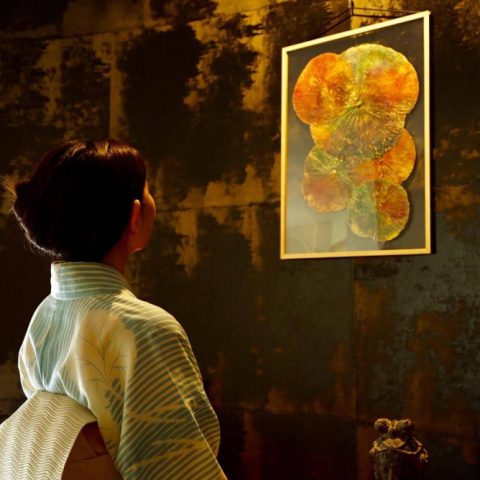
The team here at Arigato Travel has recently had the pleasure of meeting the owner of SushiUniversity, Tetsuya Hanada san, who wrote his own book, Beyond the Sushi Chef: The Ultimate Bible for Mastering Nigiri Sushi, to guide others on nigiri sushi and more! Holding such a great passion for sharing sushi with everyone, we simply couldn’t wait to share them with you here on our blog!

Thank you for your time today! First of all, can you please introduce yourself?
My name is Tetsuya Hanada, a person in charge, founder, and managing director of SushiUniversity. I was born and raised in Ibaraki prefecture in Japan.
After I graduated, I took a trip to Sydney, Australia for the first time. Of course, this was my first trip abroad. At that time I hadn’t gone to language school to study seriously, and I wasted a lot of time and money. But now I realise that trip was the starting line for my life as a traveller. Since then, I have visited over 100 countries. I even lived in Shanghai, China for work for a time. And I once participated in a 3-week tour in Central America. These were all amazing experiences.

I am often asked, “What country do you recommend?” My answer to that is, “Every country is interesting in its own way. If I had all the time and money in the world, I’d want to visit all of them multiple times. I’ve only seen such a small part of the world.
There is just one request I have as a person who loves to travel. And that is for a world at peace. I want a world where anyone who has a ticket can travel anywhere in the world without a passport. What I can contribute to that bold idea is to tell people how amazing travel is. There is nothing better than enjoying a delicious local meal with other global travellers. After all, that’s why I established Tabimori, Inc. to spread food culture. My life’s journey is a long way from being over.

What inspired you to go in-depth into the world and culture of nigiri sushi?
My family was a normal family, but my parents were interested in eating, and we often went to eat at famous restaurants since I was a child. Of course, this is not Tokyo, so there are no world-famous restaurants. But we did go to a restaurant that was the talk of the town in Ibaraki Prefecture. However, my interest in eating wasn’t sealed until I travelled abroad or went on business trips.
It was then that I met my partner, who prioritises travel and eating, and the seal was broken, and I started going to various restaurants at an accelerated pace. I have been to Michelin-starred restaurants in Paris and Florence. And whilst I was living in Shanghai, I think I went to all the famous Chinese restaurants. I also travelled a lot to Ho Chi Minh City, so I think I have been to all the famous Vietnamese restaurants as well. And when I went to one sushi restaurant, I was met with sushi that negated all the sushi I had ever eaten. It is a sushi restaurant that makes you eat so-called “omakase.”
What was shocking to me was that every time I went there, as I visited regularly, the same sushi items tasted different. The taste is different when it comes from different places, such as tiger prawns from Oita or from Tokyo Bay. After that, I had to go to many sushi restaurants, and I got a lot of information about preparation methods, and I recognized the depth of sushi culture. I also realised that people, including the Japanese, do not understand sushi at all, and I wanted to communicate this information correctly.

What message do you want your reader to take away from your recipes, guides, and history of sushi?
Nigiri-zushi originated in Edo (present-day Tokyo) about 200 years ago and has remained largely unchanged. At that time, there were no refrigeration facilities, so preparation was done to prioritise preservation. It is interesting to know that preparing sushi also served to make nigiri-zushi tasty.
I believe that by learning about preparation, sushi ingredients guide, and the history of sushi, you will look forward to going to a sushi restaurant even before you eat. The more you know about sushi, the better it tastes.

What was your strategy with making a kindle book about the basics and depth of nigiri sushi for readers? What group of people do you want to read it?
Rather than sushi rolls, which have been developed in many countries outside of Japan, the sushi presented in this book is nigiri-zushi, which is rooted in Japanese traditions from the Edo period (1603-1868). Nigiri-zushi is not a Japanese homestyle dish, but is made by professional sushi chefs who have undergone rigorous training over a long period of time. Until now, there has been no book available to help customers understand why nigiri-zushi is far more delicious than conveyor-belt sushi or take-out sushi.
There must be many people who have visited Japan and entered a restaurant specialising in nigiri-zushi, but did not know what they were putting in their mouths and were confused about the etiquette. After you have learned about the history of nigiri-zushi, its terminology, practical etiquette, and how it goes with sake in this e-book, you can sit at the counter of a sushi restaurant and visually enjoy the beautiful gestures of the chefs while getting a deeper understanding of Japanese culture. To help readers understand the unfamiliarity of nigiri-zushi, we have thoroughly exposed the sushi ingredients, rice, wasabi, gari, soy sauce, vinegar, and even the behind-the-scenes management of sushi restaurants. In particular, we carefully researched the sushi items available in Tokyo.

Other than ease of access, was there any other reason why you wanted to go into the e-books for SushiUniversity overprinting?
Since it is difficult to deliver paper books all over the world, we first created an ebook format.
Have you considered writing other books about Japanese food or expanding SushiUniversity’s brand beyond the book and blog? Dream Big!
In fact, we offer sushi tours accompanied by interpreters to give visitors a real nigiri-zushi experience.
With the shift from group tours to individual travel, more tourists are looking for a more personalised experience. With this focus on personalised experiences, people are becoming more active in their search for popular sushi restaurants, using the Internet to contact Michelin-starred restaurants directly. However, the more high-end the restaurant, the more the menu is “omakase,” which means that the customers do not know in what order and what kind of fish they will be served.

Omakase is a pleasure for Japanese people, but for foreigners, sushi remains a “delicious but difficult-to-understand world.” For example, learning about the culture associated with sushi, or enjoying a conversation with the owner is far from the “satisfaction of both the palate and the mind” that Japanese people enjoy.
Our strategy is to have people read and learn from the book and then experience it for themselves. Then they will read the book again and review it. And we want to make the book, not only in English, but in many language versions. I would also like to make books on Chinese and Vietnamese cuisine.

If you could let everyone in the world know one thing about nigiri sushi or Japan, what would you pick?
Compared to restaurants around the world, a sushi restaurant is about making sushi right in front of the customer. In addition to making sushi, the sushi chef must be able to perform other duties, such as providing pleasant conversation, checking in to make customers feel good, and so on.

If you had to pick only one, what is your favorite Sushi?
I love akagai nigiri (Ark shell).
Thank you for your time today. We truly appreciate you giving us the chance to share your company and passion with our readers!
Follow SushiUniversity on Social media!
Website: https://sushiuniversity.jp/
Instagram: https://www.instagram.com/sushiuniversity/
Facebook: https://www.facebook.com/sushiuniversity
Twitter: https://twitter.com/sushiuniversity
Join us for a local experience during your trip to Tokyo! Our expert guides are waiting for you!



